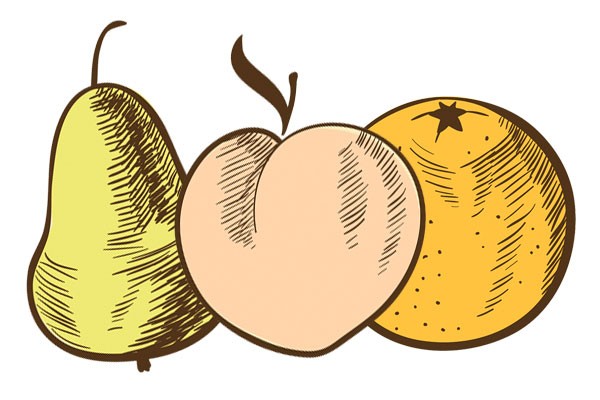Pittsburgh City Council is about to decide whether to designate the Strip District's 1,500-foot-long Produce Terminal as a historic structure. It's the kind of debate Pittsburghers love to have: Worrying about preserving the Strip District's authenticity, after all, is among the Strip District's most authentic traditions.
If you're a newcomer, it might be hard to see what the fuss is about. The Buncher Company wants to demolish the western third of the building, providing access to a $450 million mixed-use development it hopes to create along the Allegheny River. Supporters note that the building is largely vacant. Architecturally speaking, meanwhile, there's little to distinguish the low-slung structure. Walter Kidney, the late dean of Pittsburgh architectural historians, doesn't even mention it in his book Pittsburgh's Landmark Architecture.
But the building is historic in another sense: It connects us to a time when Pittsburgh was central to the national economy, an era when — even if something wasn't made here — there was a good chance it passed through on the way someplace else.
Opened in 1929 as the Pennsylvania Railroad Fruit Auction & Sales Building, the terminal consolidated produce-handling operations — unloading rail cars, bidding on produce, even repairing boxes and barrels damaged in transit — in a single location. The facility was "as modern as engineering science can devise," crowed a 1928 account in the business magazine Greater Pittsburgh. Produce arrived from all over the Western Hemisphere, to be distributed locally or shipped elsewhere. Nearly 50 years later, it was still among the country's largest produce terminals, processing 570 million pounds of fruits and vegetables a year by 1975.
And it was not just a place of work but a way of life. Auctions were held regularly, attracting brokers like the one featured in a 1959 newspaper profile: "When his temper boils [over low bids], he puts on his hat and coat to leave. Just an act! But it usually brings higher bids!"
Other accounts read like passages from a Steinbeck novel: "Inside the chilly terminal, half a dozen men in heavy work clothes are warming up around an iron stove and baking potatoes on the ductwork for a morning snack," a February 1971 Pittsburgh Press story began. "It would be just another dismal winter scene if it weren't for the fact that these men have summer at their feet. Summer in the form of fresh strawberries, beans, asparagus, tangerines, grapefruit, oranges, apples, pears and lemons." Retail customers too shopped in its often-drafty spaces, especially when the grape harvest attracted amateur winemakers.
But worries about the produce terminal's future have also defined its past. By 1965, a U.S. Department of Agriculture report worried about traffic access to warehouse facilities, while wholesalers were threatened with redevelopment proposals. Chief among these, until the Buncher proposal came along, was "Penn Park," one of those 1960s-era proposals that look best when they are 30 years in the future. Boulevards raced along park-like plazas as curved office towers grouped around traffic circles, like executives standing around a water cooler. That plan collapsed, but by the late 1990s, the Strip had a new fear: being crowded out by new nightclubs.
The real threats were more gradual, more inexorable. Trucks replaced trains, suburbs supplanted the cities, prepackaged food crowded out fresh produce. In 1976, the Pittsburgh Press fretted that the terminal, which had housed as many as 200 produce dealers, had only two dozen left: "[W]here once the Strip District terminal was the only place to unload large quantities of produce, it is fast becoming just one more place to park a truck."
Government's attitude changed as well. In the early 1980s, the city's Urban Redevelopment Authority invested $2.5 million to upgrade it. In those days, the Pittsburgh Post-Gazette reported, [it was] "at its busiest" during "the dark, early morning hours from 1 a.m. to 6 a.m.," and during fruit auctions three days a week. Three decades later, by contrast, a URA official would tell the paper that "The Strip is about Penn Avenue on Saturday morning."
No doubt lots of Pittsburghers would agree, which shows how much has already changed ... for the Terminal building and the city.
These days, Pittsburgh's primary boast is the quality of life it offers to its own citizens; years ago, we defined ourselves largely by the goods and services we provided to everyone else. The Strip District was the rare place where those two aspects of its character coincided. It didn't just exist for weekend visitors ... and that authenticity helped attract visitors in the first place.
That might be true for a while longer, even if the Buncher plan goes through, or the condos planned for the Wholey's warehouse join the condos already built at the Otto Milk and Armstrong Cork buildings. Anyway, the wholesalers and auctioneers aren't coming back: Dubbing the building historic won't reverse its history.
But for decades now, the produce terminal helped define the Strip District's history. You can understand why preservationists don't want to cut that building, or the story it tells, short.



















